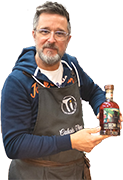CHAMPAGNE the Christmas wine
The origin of Champagne:
The word "Champagne" takes its origin from the old French "Canpayne" dating from the 11th century meaning "large expanse of flat land". It is these fields, open to large plateaus of pale colors, which thus inspired the name that the region also bears.
From the Middle Ages, Champagne began to produce still wines (non-sparkling) whose reputation, thanks in particular to Henry IV, extended beyond the region towards the 16th century. The following century began a new phase with the mastery of the second fermentation and the discovery of blends, this time thanks to Dom Pérignon, who according to legend discovered the method of vinification of sparkling wines in Limoux. From then on, the success of Champagne continued to grow, and saw the birth of an organization for its marketing. The Ruinart house founded in 1729 the first sparkling Champagne wine merchant.
Currently, this sparkling wine is protected by an AOC (Appellation d'Origine Contrôlée) which makes it possible to regulate the geographical boundaries, the yields, and its production principle.
And more recently, it is the supreme recognition for the Champagne vineyards, Coteaux, Maisons et Caves, which have been listed since 2015 as a UNESCO World Heritage Site.
The Terroirs of Champagne:
There are 4 production zones delimited by a law of 1927, which group together 17 Champagne terroirs, spread over 5 departments and approximately 33,500 Ha.
- Champagne from la montagne de Reims
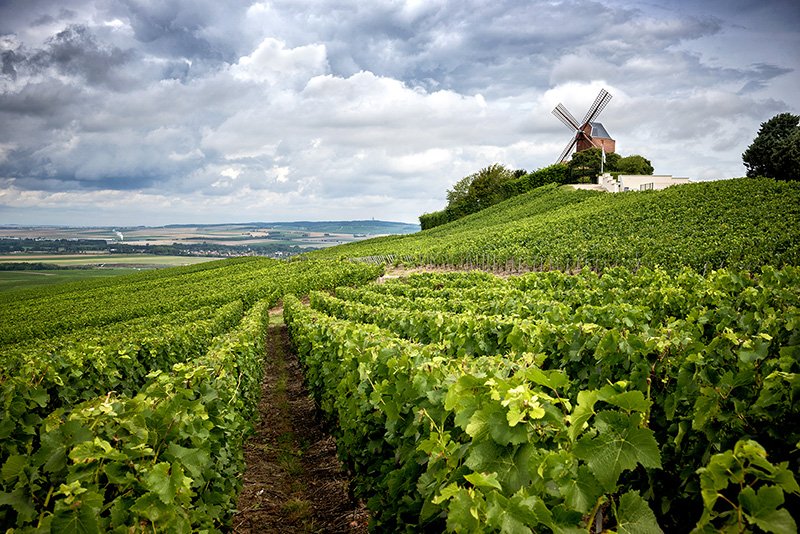
Department of Marne, the dominant grape variety is Pinot Noir, the hillsides are mostly south facing, on chalk soil (rather in depth). There are powerful and full-bodied wines.
- Champagne from the Marne valley
Department of Marne, Aisne, Seine et Marne, meunier is the dominant grape variety, on clay-limestone soil, it develops fruity aromas and brings suppleness to champagne.
- Champagne from the Côte des Blancs
Department of Marne, the kingdom of Chardonnay produces fine and elegant champagnes, an omnipresent chalk soil which, unlike the mountain of Reims, is rather on the surface, allowing water and heat to be kept underground.
- Champagne from the Côte des Bars
Villages of Bar sur Aube, Bar sur Seine, in this production area one finds mainly in the basement, marl. Its vineyards are mainly planted with Pinot Noir. These are characterful champagnes with complex aromas and roundness.
We can also talk about the Champagne climate (because the climate is one of the elements that make up a terroir) it enjoys a double influence: Oceanic and Continental, explaining cold winters, mild summers, and regular rainfall.
Regarding the Champagne terroir, it should be noted that it breaks down into three categories defined according to the characteristics of the soil and exposure to the sun. Out of a set of 319 municipalities that make up the production of grapes, only:
- 17 of these municipalities are entitled to the designation "Champagne Grand Cru".
- and 44 are entitled to the designation "Champagne Premier Cru".
The grape varieties of Champagne:
Champagne is made with three main grape varieties:
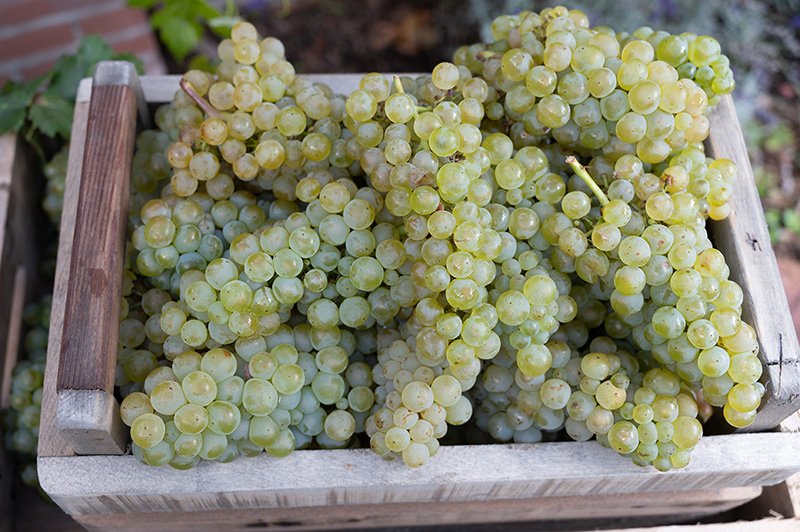
- Chardonnay white grape with white juice (hence the term “Blanc de Blancs” for a champagne made from 100% of this grape), it gives fresh and delicate wines, with notes of dried fruit or citrus fruits and brings length to champagne. It represents around 30% of the production area.
- Pinot Noir, black grape with white juice (hence the term “Blanc de Noirs” for a champagne composed exclusively of Pinot Noir or Pinot Meunier), it gives structured wines with an aromatic dominant of red fruits and represents almost 40% of production.
- Pinot Meunier, also black grape with white juice, this later variety than Pinot Noir brings suppleness and roundness, with fruity notes of redcurrant or apple. Its aging ability is less important and covers around 30% of production.
Other grape varieties (Arbanne, Petit Meslier, Pinot Blanc, etc.) are also authorized for the production of champagne but represent only 0.3% of the total surface (93 Ha out of 33,500 Ha).
The making of champagne wine:
It is done according to the Champenoise Method, also called the Traditional Method, the obligation of which is to carry out a double fermentation (the 1st in the tank and the 2nd necessarily in the bottle).
Champagne making ten steps:
- Picking (only by hand), Pressing (traditional or pneumatic press), 1st Fermentation, Blending + Tirage liqueur, 2nd Fermentation (only in bottle), Aging (minimum required), Riddling (once a day), Disgorgement ( compulsory process to remove the deposit), Dosage, Dressing.
The different types of champagnes:
Traditional blend champagne:
It is the most famous and most produced champagne. It brings together the different grape varieties, vintages, reserve wines to keep the style of the house. It is also through this blend (cuvée de blanc and cuvée de rouge) that rosé champagnes are made.
The perfect vintage champagne for holiday meals:
It is a champagne produced with grapes from one and the same year, generally in years with high potential, and represents around 5% of production. A champagne cut for aging.
The prestigious champagne cuvées to offer as a Christmas gift:
Very high quality cuvée (there are sometimes several) made according to specific choices defining the style of the great houses. Champagne also for keeping.
The ideal blanc de blancs champagne for the Christmas Eve aperitif:
Champagne made with a single grape variety (single grape), chardonnay, a style of finesse and elegance.
Blanc de Noirs champagne:
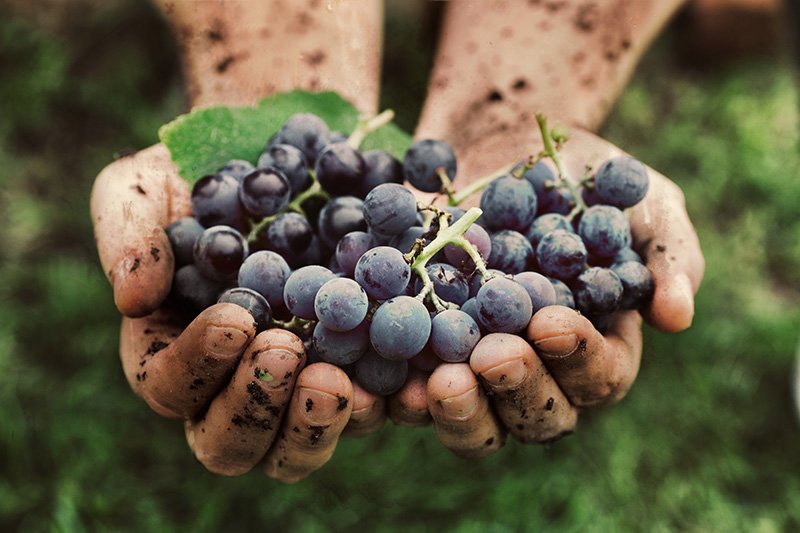
Made of course with black grapes, Pinot Noir and Pinot Meunier, bringing power and fruitiness. They are also found in single varietals, knowing that a 100% Pinot Meunier is rather rare, but very pleasant to taste.
The dosage of champagne:
It is added just after disgorging, and will determine the nature of the wine (see dosage scale below).
Champagne aging stages:
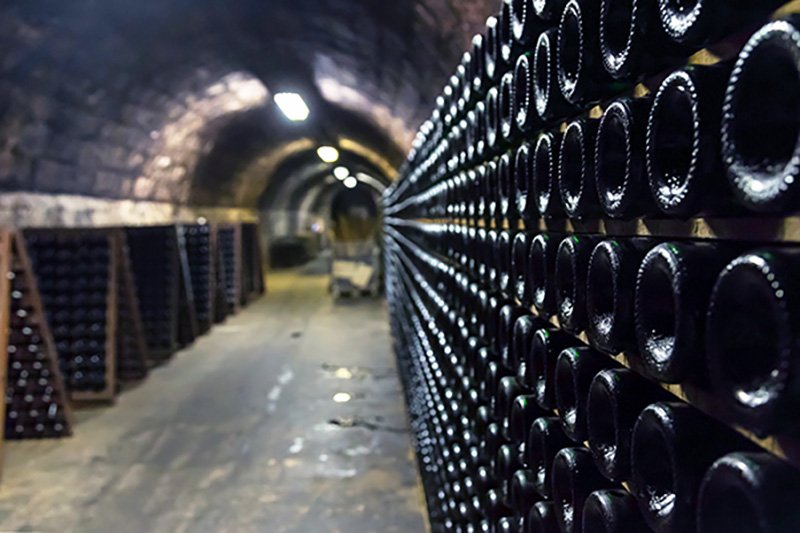
- Young Champagne
A champagne from 1 to 3 years old: vegetal aromas, red or exotic fruits.
- Mature Champagne
A Champagne from 3 to 5 years old: more marked aromas, dried fruits and spices.
- Complex Champagne
A Champagne over 5 years old: aromas of ripe fruit, candied, toasted, honey.
The dosage of champagne:
This is the sugar content of the shipping liquor that is added just after disgorging (this makes it possible to supplement the centiliters lost during this phase and to define the nature of the wine):
- plain Brut champagne: not dosed
- Extra-brut champagne: 0 to 6 g / l
- Brut champagne: 6 to 12 g / l
- Extra-dry champagne: 12 to 17 g / l
- Dry champagne: 17 to 32 g / l
- Demi-sec champagne: 32 to 50 g / l
- Sweet champagne: more than 50 g / l
The still wines of Champagne:
This may come as a surprise, but in champagne we also produce still wines (non-sparkling), which can be found under two names:
- The Champagne hillsides in red, white and rosé in the towns of Damery, Vertus, Bouzy.
Read how to buy champagne in Calais VAT free and duty free read
To know more about the difference between Champagne and Sparkling Wine

